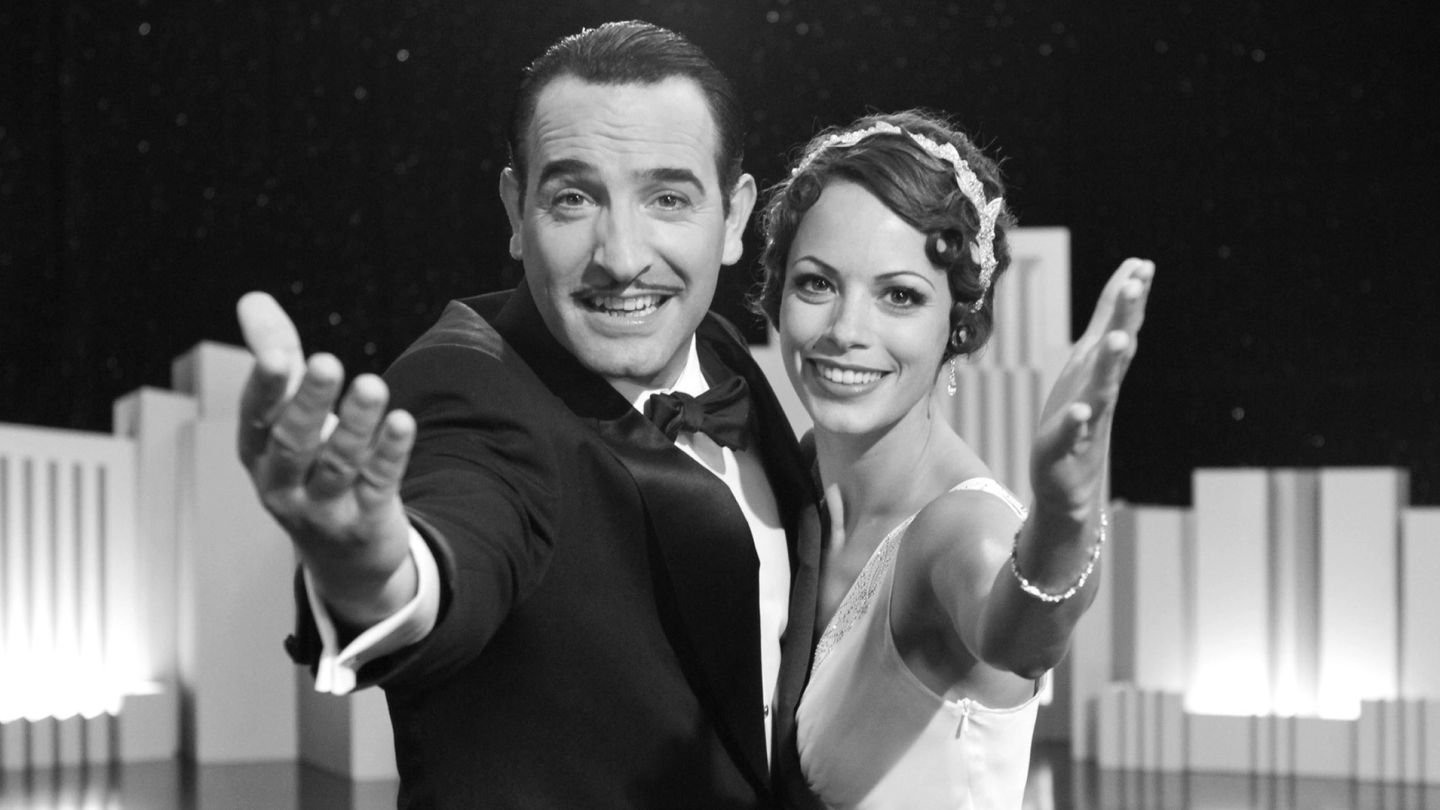

The Artist – the silent film you need to watch
Words: Support BMAS
By Tatiana Hambro
A celebratory homage to the silent era of cinema.
The disgruntled viewers who walked out of The Artist in Liverpool demanding a refund, claiming they were unaware it was silent and in black and white, bears testament to the huge ambition of this film: how do you convince a super technological, modernized, millennial audience that a film with no words and no colour is worth seeing? Not only does The Artist succeed in making you feel that watching it is worth your while, it centres itself around this very debate, eventually concluding in a celebratory homage to the silent era of cinema.
The film’s great challenge is that it has to convince its 2012 audience that what is happening on screen is ‘reality’. The effect is achieved by the brilliant device of presenting a play within a play; always, since Kyd’s Spanish Tragedy (and then again in Hamlet), associated with exposing reality. In the current case, I suppose it would be more accurate to write ‘a film within a film’. The opening sequence records the screening of George Valentin’s film A Russian Affair and, in doing so, establishes a concrete sense of ‘the real’ for the rest of the film, so that the distance between the 2012 audience, and the 1920s audience is diminished. It is almost as if, miraculously, we have forgotten our contemporary contexts as we, for the duration of the film at least, reside in the world of Hollywood on the cusp of 1930s and at the brink of huge change.
Initially, what charms us most are the pockets of genuine theatrical creativity; it’s nice to see the film justify the title. Moments such as when aspiring actress, Peppy Miller, slides herself into Valentin’s suit which is hung in such an uncanny way that it appears almost as the man himself. Animating both characters, Peppy creates a romantic scene between herself and Valentin, which eventually culminates in an utterly convincing embrace. Simple and yet so effective, Bérénice Bejo (who is brilliant throughout the film) is at her best here.
Although the puppet scene above is undoubtedly a gem, the style of acting it requires is brought into crisis during the film, as it reveals how the introduction of speech into cinema challenged the old style of acting, whereby actors ‘mugged off to the camera’. Zimmer, the studio boss who ironically resembles Harvey Weinstein (who bought the films distributing rights), ceases to produce all silent films, declaring them not just a dying breed, but already dead.
According to the fans of the ‘talking film’ (pretty much every character bar its protagonist), silent films are over-the-top and unsubtle. Being able to talk introduces a new quality of nuance and reality, suggested by the scene where Valentin is unable to communicate with other people in the street, who are speaking normally but with no sound. Without sound; without the ability to lip read; and without any clues through actions and emotions, there is an entire break down of communication – the implication being that if a film is going to succeed in creating a realistic, suggestive and subtle piece of work, then it needs to be a talking film.
Well, The Artist, with a fancy dollop of irony, disproves the maxim its characters invent and delivers the apparently impossible: a silent film that is three-dimensional; and also simultaneously subtle and slapstick. The love story between Valentin and Miller creeps up on us, we don’t realise we care that much until we are confronted by the suicide scene; horrified by the fact that this light-hearted love story may well end a tragedy.
But of course, it doesn’t. And The Artist is more than a romance, more than a tragedy, more than a farce. It may seem very much of the past, but its self-reflectivity is utterly post modern and, despite being a laugh a minute, it packs a punch in its final moments. With sound eventually introduced into the movie, Valentin is asked to redo a dance number that is being filmed. Here, for once, sound is completely vital to the scene as it is not what he says, but the way he says ‘With Pleasure’ that is important. His thick and unapologetic French accent reminds us just how much Hollywood owes to European cinema. And from this moment on, the concept of a silent film released in 2012 suddenly feels appropriate, long-overdue, relevant and gloriously modern.
Michel Hazanavicius – I take the liberty in speaking for us all, turning the volume right up to say these three words: “un grand merci!”
Ones to watch:
Catch Elizabeth Olsen’s debut in my ‘Martha Marcy May Marlene’. Independent film darling, John Hawkes unsurprisingly nails the role of the abusive and enigmatic cult leader; his gravelly tones in the song, ‘She’s just a picture’ successfully groomed me for seduction. Even after the film, I wanted to listen to it on Youtube again and again. Now showing.
To pursue the psychological theme established in ‘M.M.M.M’, David Cronenberg’s ‘A Dangerous Method’ is a must-see. Keira Knightley, Viggo Mortensen and man-of-the-moment Michael Fassbender. An all star cast in this story of sexual psychosis and of the birth of psychoanalysis. Now showing.
One to remember:
With all the flapper dresses in the magazines, on the stars, and in the stores, who can forget that ‘The Great Gatsby’ is heading our way at the end of this year? The combination of Fitzgerald, Luhrmann and DiCaprio is one hell of a cocktail, and I haven’t even mentioned Carey Mulligan yet. With our economy on its knees, a jump back into the roaring 20s is always a welcome journey, but with Luhrmann at the helm something tells me this film will be anything but dated.


